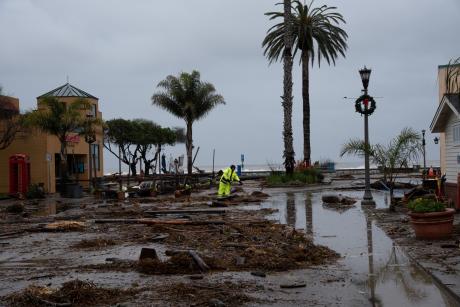The Alzheimer’s Association Dementia Care Provider Roundtable (AADCPR) is a consortium of thought leaders spanning assisted living, nursing homes, home health and home care, whose mission is to promote the dissemination and adoption of evidence-based practice recommendations.
Using the Alzheimer’s Association’s Emergency Preparedness Guidelines as a jumping off point, the AADCPR sought to provide insight into the creative ways in which their organizations have responded to the delivery of care during the pandemic, organized via the following five topics: caring for residents and families, caring for staff, seeking standardized guidance, the regulatory response and preparing for ongoing and new challenges in a post-COVID-19-pandemic world. This article highlights the last topic: preparing for ongoing and new challenges in a post-pandemic world.
Critical Safety Net
Nursing homes, assisted living communities, home healthcare and home care tend not to be the first options that jump to mind when discussing healthcare, but as Barnett and Grabowski state, “they are a critical safety net for frail older adults and part of the fabric of our society.”
Statistics indicate that, eventually, 44 percent of men and 58 percent of women will use the services of a nursing home. Disasters and pandemics will also continue to occur, and so we must find a way to increase the resilience of these settings to future unexpected events.
Placing limits on the number of settings that a given care provider can service might lower the risk of spread.
To the degree that large residential care communities are more vulnerable to pathogen spread, a greater number of smaller settings is likely preferable, as is a higher proportion of single rooms. The Green House small home model is an evidence-based approach that has documented the positive effects of smaller care settings on factors such as social engagement, and studies demonstrate resident preference for single rooms.
Placing limits on the number of settings that a given care provider can service might also lower the risk of spread, as might dedicating nursing homes to long-stay residents while creating separate nursing homes focused on post-acute care. This would require a restructuring of payment systems, but it would alleviate the current situation in which nursing homes face bankruptcy due to decreased Medicare revenue, while facing higher care costs for long-stay residents, and lower Medicaid reimbursement levels.
Clearly, PPE, test availability, infection control guidance and staffing levels for long-term and community-based settings should be top priority in the continued response and future response to any novel virus that creates a particular burden for older adults. This includes delineating symptom profiles for different ages, and recognizing that care providers working with older adults and people with cognitive impairment are likely to be the most expert in detecting subtle changes that might indicate the existence of a serious disease.
State and federal agencies should review existing required infection control and prevention training, especially for assisted living communities, home healthcare, and home care, where less overall training is required. As Pillemer et al. put it, COVID-19 in long-term and community-based care should be considered, and continue to be treated, as a critical sub-outbreak within the broader expanse of the pandemic. Only by discerning the unique rates and patterns of disease and transmission occurring within these highest-risk settings can community-wide infection be controlled.
The courage of persons who return to work day after day to care for the frailest in our society, knowing they may be infected with a novel virus and may transmit it to a loved one, should never again go unappreciated. Many of these workers have underlying health conditions themselves, and daily we learn more about the many negative health outcomes of COVID-19 for survivors. Hazard pay for first responders and hospital workers should extend to long-term and community-based care nursing and staff, as should short-term programs to quickly supplement the workforce when needed.
Accurate data is needed to support and refine each of the recommendations made here. In the case of COVID-19, this may present a problem because, since the pandemic’s start, there has been wide variation in disease reporting formats, case definitions and update frequencies. Some states report only cases once they meet a certain minimum threshold, or only in settings of a certain size.
COVID-19 in long-term and community-based care should be considered, and treated, as a critical sub-outbreak within the pandemic.
Even under more recent federal reporting requirements, residential care communities are not required to report cases and deaths that took place before May 2020—the critical early months of the first outbreak in the United States. There is understandable concern that a swiss cheese of data collection may present a barrier to future longitudinal and national analyses. As Smith et al. write, we must ensure “the accuracy and integrity of statistical data collection and analysis to provide the raw material for clinical decision making and policy making not adulterated by political or financial agendas.”
As the COVID-19 threat persists in the Delta variant and some precautions remain in place, we must grapple with whether or not we help or hurt through the limitations we place on the lives of elders to keep them safe. Similarly, the effects on staff now and in the future must be recognized. Even as we figure out how to better safeguard staff health and safety, we must put more resources into supporting mental health due to the chronic stress staff experience while working at the epicenter of COVID-19.
A Few Positives for the Future
Areas of potential growth have opened as a consequence of the coronavirus pandemic. While long-term and community-based care providers have always seen themselves as a part of the healthcare continuum, the healthcare system and society generally have not. COVID-19 has helped to shine a light on the importance of long-term and community-based care on the health and well-being of older adults and those with cognitive impairment.
As is true for broader sectors of society, eldercare providers have a new appreciation for the value of tech for video conferencing, telehealth and connecting clients with distant family and friends. We expect these approaches not only to continue, but to evolve in ways that make them simpler for older adults and people with physical and cognitive deficits to use. Issues around regulatory oversight, public funding, infection control guidance and local support for long-term and community-based providers have come to the fore with a rapidity and relevance that only a crisis of the magnitude of COVID-19 could have engendered.
The AADCPR welcomes the opportunity to engage in and contribute to these discussions and solutions. Finally, as deadly as COVID-19 is, a future pandemic could be more deadly still. The ongoing experiences and lessons learned through COVID-19 will be essential for early and effective future responses to emerging pathogens. Long-term and community-based care providers have much to add to these preparation and planning efforts.









